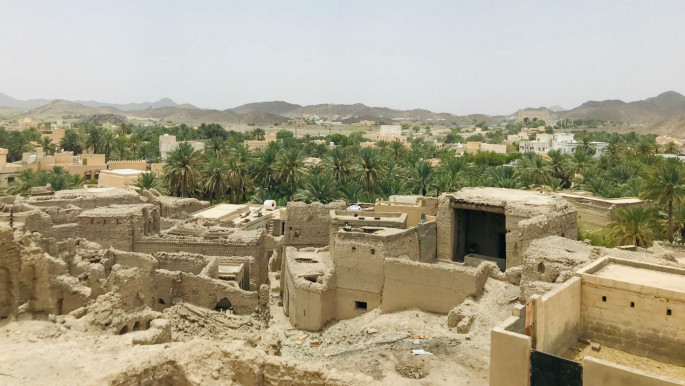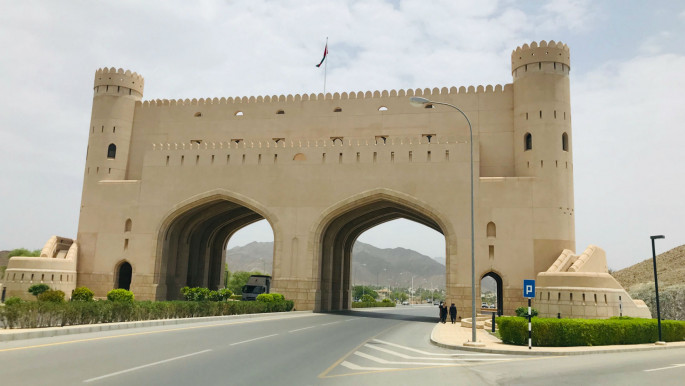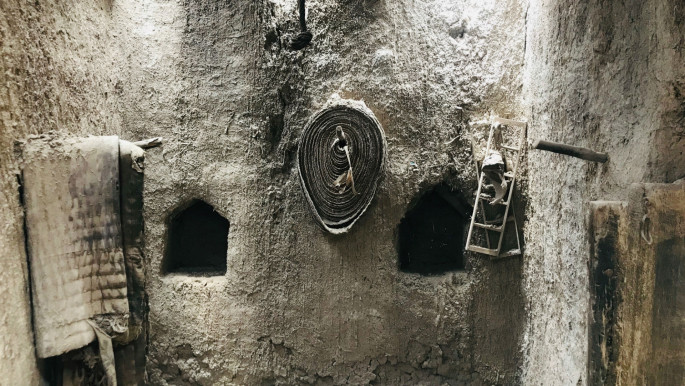Where Oman conquered mountains: A journey through the heart of the sultanate
Nestled in a narrow gorge that cuts through the Hajar Mountains is a colourful village and lush green date plantation that competes against the grey and beige of their surroundings.
The cool cream, soothing soft blue and delicate light lime paintwork of the villas stand out against the dominating mountain range in the distance and brittle grey carpet of rock, sand and slate underneath.
Being early afternoon, there is not a soul in sight. Wildlife will be sheltering in the shadows of the mountains or hiding in the crevices of the rocks. Human residents of this hamlet will likely be sleeping off their heavy lunches in their air-conditioned homes.
Journey through history
Travelling through the interior is a journey through time and space, and shows how man has remedied the long competition with nature.
Small forts and town names spelled out in stone can be seen on side of many mountains here. Among the stone-strewn landscape are farms and lush green date palms.
Oman's interior can see dizzying highs of up to 50 degrees, the thick dry air slowing the movement of limbs and enticing one's senses to surrender to its extremities. Yet despite the challenging conditions of the climate and its rocky topography, the Dakhliya region has been a thriving bread basket for Oman.
 |
| Landscape of Bahla in Oman's interior [Paul McLoughlin] |
This is largely thanks to an ancient network of falaj canals that soothe and water the date plantations and verdant gardens of the hinterland.
The falaj system sees water from underground aquifers channelled to farms and villages that quilt the mountains and wadis. Canals are opened up at different times of the day allowing the fair distribution of water. Each family receives an allocated lot of water for their plots of land and in the past for domestic purposes.
The subterranean waterways course through villages and can be glimpsed occasionally between homes and under bridges in places such as Al-Hamra. In the surrounding countryside, water feeds into channels that trickle cooled water into the parched soil of palm groves.
This network of waterways has allowed agriculture to thrive in the region and encouraged settlement of all but the most resolute of wandering tribes, some of whom still split their time between Wahiba Sands and homes that occupy a space between the desert and interior.
Urban life
The towns of Bahla, Nizwa, Ibri and Jibrin are significant to Oman's history, along with important places of learning. All still boast impressive forts and marketplaces where goats, produce, handicrafts, frankincense and camels are still traded, although most homes now equipped with all the mod cons and 4X4s parked outside.
I'm headed again for Bahla, a one-time capital of Oman. The newly-built Bahla Gate marks the entrance for motorists turning off the main highway linking the cities of the interior with the capital Muscat that lies some 200 km down the road.
Roads leading to and from Bahla cut through the huge arches and visitors can walk along the length of the gate for stunning views of the town.
The old perimeter wall of Bahla can be seen in the distance, an ancient stone sur stitched intermittently into the surrounding hillside.
 |
| Bahla Gate, the entrance to the old city [Paul McLoughlin] |
Bahla is famous for its pottery. Claypots are still baked in kilns found in workshops across the town and the prized ornaments are sold in markets far-and-wide.
Perhaps the finest mud and stone structure of them all is Bahla Fort, a UNESCO World Heritage Site that has been renovated to recapture some of the past glory and charm of the castle. It was closed for the holidays when we stopped by, but it's a site I've visited before.
The huge fortification forms the heart of Bahla, sitting aloft on a mound overlooking the modern villas and abandoned villages below. A smooth adobe mosque stands to its side, and as I inspect the stump of a centuries-old minaret the call to prayer echoes through the valley from distant loudspeakers.
Built between the 11th and 15th century, Bahla fort is one of the largest of the interior's impressive citadels, which protected the thriving villages in the area from roving bands of Bedouin tribes and expansive foreign powers. In nearby Salut, Arab tribes from Yemen, under Malek bin Fahm al-Dawsi al-Azdi, defeated the Persians and led to their eviction from the Arabian Peninsula.
Although Persian and other empires came to these lands again, they were eventually defeated by the Omanis, which reflects the long-standing tenacity and independence of the sultanate.
Under the Omani Yaruba dynasty, Bahla became a thriving trading hub, in particular for frankincense heading north from Dhofar to the rest of the region and overseas. Even today the perfume of melting luban is ever present in homes and offices across Oman, a commodity that made the land immensely wealthy and famous beyond the Arabian Peninsula.
Forgotten towns
The ruins of old neighbourhoods abound Bahla. These crumbling villages, known locally as harat, or "neighbourhoods", were eventually abandoned decades ago, when Oman stepped out of isolation under the current leader Sultan Qaboos bin Said. It was during these years that a migration began from the modest straw and mud brick homes on the hillside to clusters of modern villas across the district.
Narrow alleyways of the harat are pockmarked with potholes and sometimes overwhelmed with weeds or litter, but one can still largely navigate them.
Inside the old homes, some with collapsed walls or roofs, the trapping of domestic life can still be seen with ropes and bedding hanging from walls and small nooks visible that once stored valuables and food.
 |
| A room in an abandoned home [Paul McLoughlin] |
Residents would often live in these harat during the winter and then move to nearby second homes sheltered under the palm trees of family farms when summer began and date season commenced. In these lush green semi-urban oases, before the days of AC, the climate would be cooler and led to a simple but thriving village life, I am told.
Up in the mountains of Jebel Akhdar and Jebel Shams the climate is cooler still, where breezes brush through wild flowers and perfume farms, overflowing with fruits and vegetables. It is here where Oman's famous rose water is produced.
In these mountains that a brief battle erupted between the Imamate of Oman and the coastal Sultanate of Muscat in the 1950s, when the country was split into two entities, roughly delineated by the Hajar Mountains. The British-backed sultan won the conflict ending the Treaty of Seeb – a 1920 agreement that gave the interior imamate autonomy – and the region has been peaceful since. It remained largely isolated until Sultan Qaboos came to power in 1970.
Despite these periods of seclusion, the people of Oman never fail to welcome visitors. Among one of the specialties I'm invited to try at the home of a friend is shuwa, a marinated local goat that has been wrapped in palm leaves and buried in a fire pit for the day. The succulent and tender meat is probably the best you will ever try, and completed with an accoutrement of salad, rice, chilli sauce and pickles.
Other examples of Omani hospitality are also served including fresh dates, local coffee and halwa – a special dessert, divinely sweet as the name suggests. With such good food and warm company life rarely gets sweeter than this.
As the day draws to end, there is time for a quick drive through the countryside and on to Nizwa, another old capital of Oman. The huge expanses part the mountains melt into the surrounding desert, where holiday camps sit alongside the palm frond shelters of for herds of goat.
In this mountain habitat, the trappings of a distinct way of life which remains unchallenged by the new malls, homes and colleges that have sprung up along the highway.
Paul McLoughlin is a news editor at The New Arab.
Follow him on Twitter: @PaullMcLoughlin





 Follow the Middle East's top stories in English at The New Arab on Google News
Follow the Middle East's top stories in English at The New Arab on Google News


